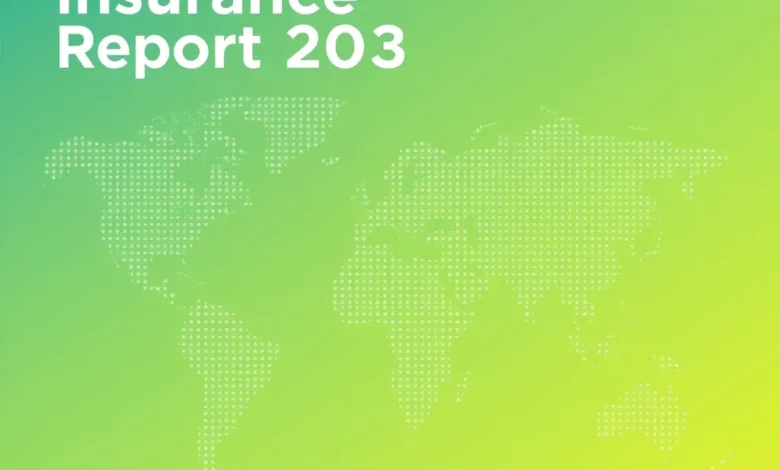Global Insurance Report 2023: Reimagining Life Insurance

The life insurance industry in 2023 stands at a pivotal moment, shaped by a decade of volatility, digital transformation, and shifting consumer expectations. As the world emerges from the shadow of the pandemic and grapples with economic uncertainty, rising inflation, and evolving demographics, life insurers are reimagining their business models to remain relevant and resilient. The Global Insurance Report 2023 explores how the sector is adapting, the challenges it faces, and the opportunities that lie ahead.
A Decade of Disruption and the Need for Reinvention
Over the past ten years, life insurance has experienced increased instability. The pandemic accelerated digital adoption and heightened risk awareness, prompting insurers to rethink traditional operating models. At the same time, economic headwinds—such as inflation, interest rate hikes, and volatile financial markets—have pressured both insurers and policyholders. These forces are driving a fundamental reimagination of the industry, with innovation and customer-centricity at the core of future growth.
Shifting Distribution Channels and the Rise of Third-Party Platforms
One of the most significant trends in recent years is the shift in value toward distribution. The industry is moving away from captive or affiliated distribution networks as products become more commoditized and technology opens new avenues for choice and convenience. In the United States, third-party distributors have expanded their market share, while proprietary networks have declined. Europe and Asia are seeing similar, though more gradual, increases in third-party distribution.
This trend is driven by the growing demand for flexible, digital-first solutions. Consumers expect to research, compare, and purchase life insurance through a variety of channels, including online platforms and financial marketplaces. Insurers are responding by building partnerships with digital distributors and investing in omnichannel strategies, ensuring they can meet customers wherever they are.
Product Innovation and the Shift to Guaranteed Solutions
Economic volatility has had a profound impact on product preferences. In many markets, there has been a shift away from unit-linked products, where policyholders bear investment risks, toward non-unit-linked or guaranteed products. The uncertainty of equity markets and the pressure on disposable incomes have made customers more risk-averse, favoring policies that offer stability and predictable returns.
This has led to increased demand for life insurance products with guaranteed rates, especially as interest rates rise and traditional savings vehicles become more attractive. Insurers are innovating by designing hybrid products that blend protection with savings, as well as flexible policies that can adapt to changing life circumstances. The focus is on delivering value, security, and peace of mind in an increasingly uncertain world.
Digital Transformation and Operational Excellence
Digital transformation remains a top priority for life insurers in 2023. The sector is investing heavily in cloud-based operations, intelligent automation, and advanced analytics to streamline processes, reduce costs, and enhance the customer experience. Agents are being empowered with digital tools to increase productivity and deepen engagement, while underwriting is becoming more automated thanks to real-time use of alternative data.
These investments are not just about efficiency—they are about building a foundation for future growth. By modernizing core systems and embracing new technologies, insurers can launch products faster, personalize offerings, and respond more quickly to market changes. The digital gap between life insurers and their property and casualty counterparts is shrinking, and InsurTech and Big Tech players are increasingly entering the space, bringing fresh ideas and competitive pressure.
Customer-Centricity and the Wellness Revolution
The pandemic underscored the importance of health and wellness, prompting insurers to expand their value propositions beyond traditional risk protection. Wellness-as-a-Service initiatives are gaining traction, offering policyholders access to health management tools, preventive care programs, and lifestyle benefits. This approach deepens customer engagement and positions insurers as partners in their policyholders’ well-being.
Personalization is also a key theme. Insurers are leveraging data and analytics to tailor products and communications to individual needs, targeting younger populations with relevant, digital-first solutions. The goal is to build trust, increase loyalty, and create additional opportunities for cross-selling and up-selling.
Sustainability and ESG as Strategic Priorities
Sustainability has become a central concern for life insurers. Environmental, social, and governance (ESG) considerations are shaping product development, investment strategies, and corporate culture. Insurers are making sustainability a strategic priority, not only to meet regulatory requirements but also to align with customer values and societal expectations.
This includes offering products that encourage responsible behavior, investing in green assets, and promoting financial inclusion. As climate risks and social challenges intensify, insurers are uniquely positioned to drive positive change and support resilience at both the individual and community levels.
Looking Ahead: A Blueprint for the Future
The life insurance industry’s transformation is far from over. As 2023 unfolds, insurers will continue to modernize operations, accelerate digital initiatives, and innovate their product portfolios. Ecosystem partnerships will become increasingly important, enabling carriers to deliver holistic solutions and enhance the customer journey.
The winners in this new era will be those who embrace change, invest in technology and talent, and put the customer at the center of everything they do. By reimagining life insurance for the modern world, the industry can unlock new avenues for growth, deepen its societal impact, and ensure its relevance for generations to come.




